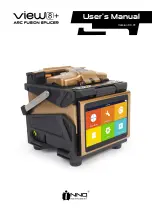
Page 9
Cam Locking Screw
C
D
E
Cam Adjustment Screw
3/8" Serrated Flange Nut
Roll Stop Catch
Inner Roll Stop
Linkage Rod
Floor Level and Inner Roll Stop Adjustments
Inner Roll Stop Cam Adjustment
5.
Measure the angle of inner roll stop and
verify the slope is a maximum of 7° (rela-
tive to the platform). If correct, tighten the
3/8
"
serrated
fl
ange nut and screw secur-
ing the cam. See Photos C and D. Move
to page 10 and check the usable platform
length as outlined.
6. If the angle is more than 7°, open the
hand pump valve (turn counterclockwise)
to lower platform slightly (1/4" maximum).
Close valve. See Figure A.
7. Reset the
fl
oor level switch cam to this
new position. Loosen the clamp securing
the torque tube-mounted Floor Level cam.
See Photo A. Rotate the torque tube-
mounted Floor Level cam until the Floor
Level switch is activated (cam depresses
switch). Tighten the clamp securing the
cam.
8. Using the control pendant,
check
fl
oor
level position by lowering the platform to
stow level and then pressing the UP but-
ton until the platform raises fully (stops).
9. If the inner roll stop rests solidly on the
vehicle
fl
oor with 7° maximum angle (rela-
tive to platform), tighten the 3/8
"
serrated
fl
ange nut and screw securing the cam.
See Photos C and D. Move to page 10
and check the usable platform length as
outlined.
If the inner roll stop does not rest on the
vehicle
fl
oor (hovers above
fl
oor), adjust
the cam as detailed in Step 4.
Note: It may be necessary to repeat
Steps 6-9 to meet Floor Level Require-
ments (see page 8).
10. Verify there is no gap between the in-
ner roll stop and the roll stop catch. See
Photo E. Turn the adjustment screw
clockwise to bring the roll stop catch
back in contact with the inner roll stop.
Do not remove the gap by adjusting the
linkage rod.
11. While holding the cam locking screw,
tighten the 3/8" serrated
fl
ange nut se-
curely.












































